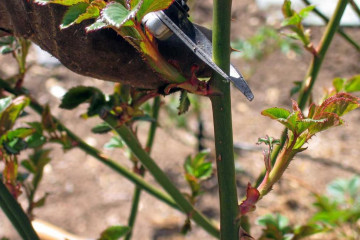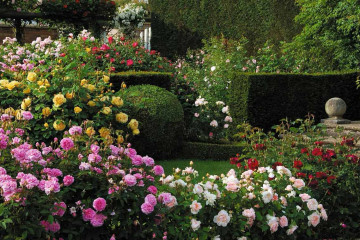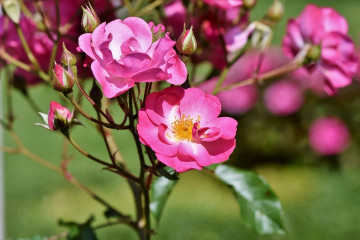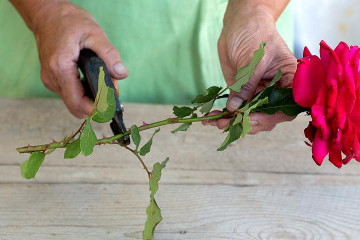How to prune a climbing rose for shaping
Content:
- Features of pruning climbing roses
- Procedure before, during and after flowering, what is the difference
- Timing of pruning a climbing rose, when is it better to do
- Tools for pruning climbing roses
- Types of pruning garden roses, for what purposes it is used
- Formation of a climbing rose bush, step by step instructions
- Cutting scheme for climbing varieties
- Bush care after pruning
For inexperienced gardeners, the first pruning of climbing roses often ends with the death of the entire flower garden. Not knowing the basic rules, beginners harm the plants, and with the successful removal of excess branches, they forget about the requirements for subsequent care. As a result, the rose bush is reborn into a rose hip and needs to be removed from the rose garden.
Features of pruning climbing roses
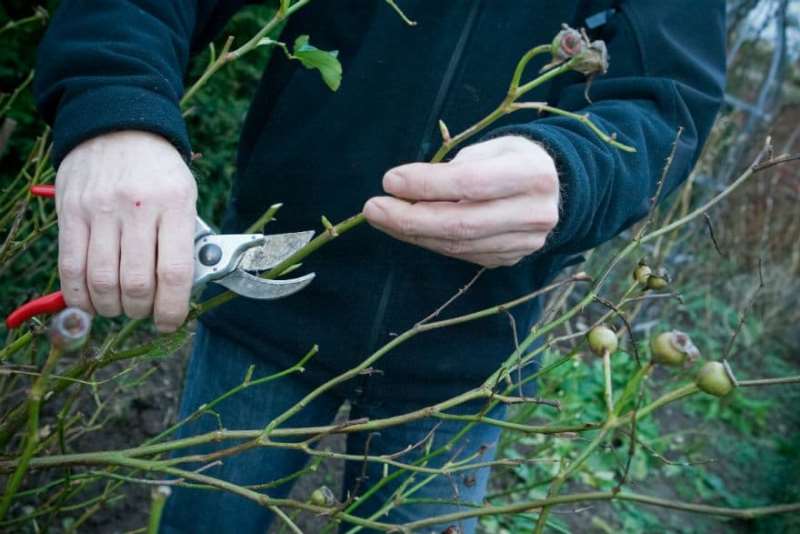
Pruning a rose
A climbing rose, the pruning of which is included in the obligatory shrub care program, will quickly weaken without this procedure and become an easy prey for diseases and pests. Such shrubs form few flowers, become not an ornament, but a disaster for a flower bed.
Is it necessary to carry out pruning
Regular manipulations should take place at least twice a year. This approach will help to form a beautiful appearance, improve winter hardiness, increase the duration and abundance of flowering.
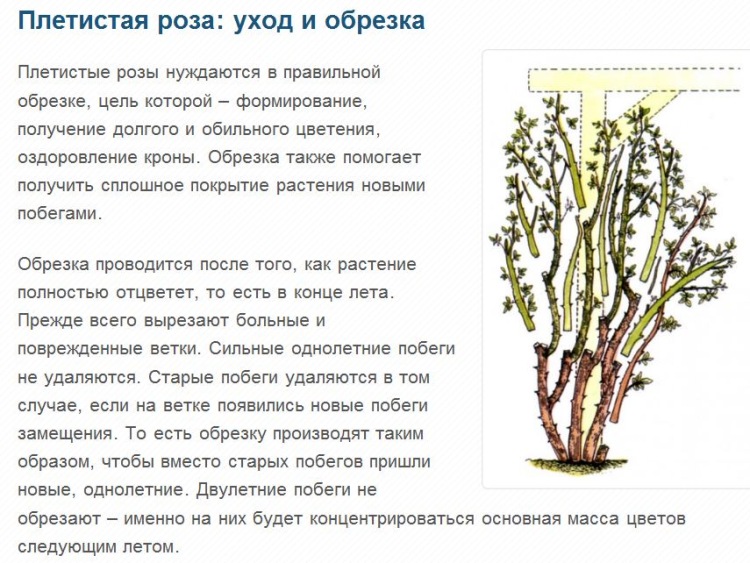
General information about the procedure
Procedure before, during and after flowering, what is the difference
Grooming and pruning of a climbing rose is carried out depending on the season.
Spring period
The manipulation is done immediately after the end of winter, while the roses are at rest. After awakening of the kidneys, the procedure is prohibited. Each type of shrub has its own requirements:
- for types with one-time flowering - thinning takes place according to the standard scheme, after which there are 54 shoots each - biennial and annual;
- for options with re-budding, each plant should have 4 annual and 7 biennial shoots, provided there is no autumn pruning.
The seedlings are not cut off immediately after the spring planting, only the damaged areas are excised. In the second and third years, 5 main and 2 lateral stems are left. In the future, manipulations are carried out as for adult shrubs.
Summer period
After the completion of budding, much work does not need to be done. For once flowering, two-year-old shoots are completely removed, and young shoots are cut to the level of two buds. If necessary, the damaged and diseased branches are excised.
For rose bushes with two flowering, cardinal pruning is not required. Dried tops are subject to removal - approximately at the level of the upper five-leafed leaves. After the second wave of budding, cutting is not performed.
Autumn period
Shrubs get rid of defective branches. The rest of the procedures before wintering are carried out exclusively on the shoots: excision of diseased and weakened parts. This approach helps rejuvenate adults who are beginning to degenerate.
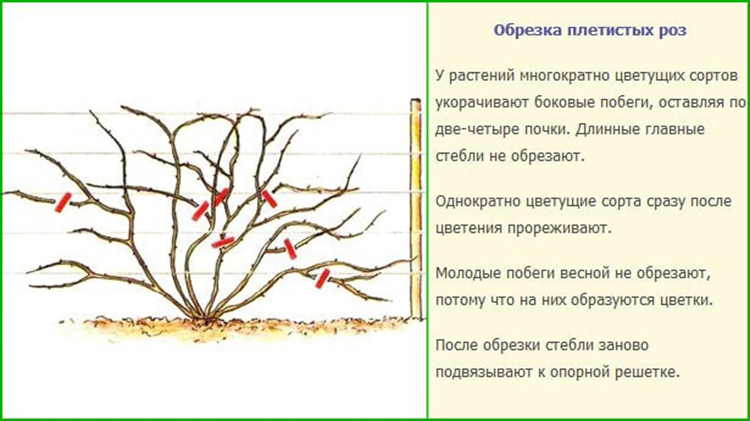
Basic Rules
Timing of pruning a climbing rose, when is it better to do
The best time to prune a climbing rose is during spring and summer.Summer procedures are mandatory, autumn procedures are optional.
Tools for pruning climbing roses
For the procedures, most gardeners use a pruner, which works on the principle of conventional scissors. The tool allows you to cut off the excess, without flattening the stem and damaging the bark.
For roses, use a separate tool that is regularly disinfected and sharpened. Storage takes place after processing with solid oil.
In addition to the pruner, a saw and a delimber can be used. The first is needed to remove old shoots, the second - to get rid of thick branches.
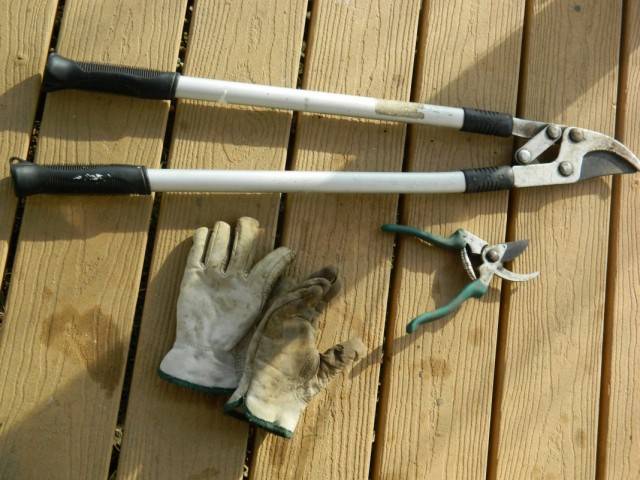
Required tools
Types of pruning garden roses, for what purposes it is used
How to prune a climbing rose? Professionals prefer to use several ways, making these types of haircuts:
- Formative - carried out after landing under the open sky and in the summer season. If the shrubs were planted in the spring, then the formation should not be delayed: a properly trimmed plant will develop better while maintaining symmetry.
- Sanitary - made with the onset of heat, after removing the shelter from the bushes. Dried, frozen and diseased parts are excised, as a result, only live shoots remain on the bush. During the autumn procedure, young growth is removed, which did not have time to form and is not able to survive the cold. In the summer, it is carried out as needed.
- Thinning - used to heal the plant and improve its appearance. Excessively dense thickets interfere with the penetration of air and sunlight inside, become a refuge for garden pests and infections. The process is carried out with the arrival of spring heat, it involves the excision of excess, weak and growing inward branches.
- Rejuvenating - necessary to improve budding performance. It is better to cut old branches at the root, they include shoots older than 4 years.
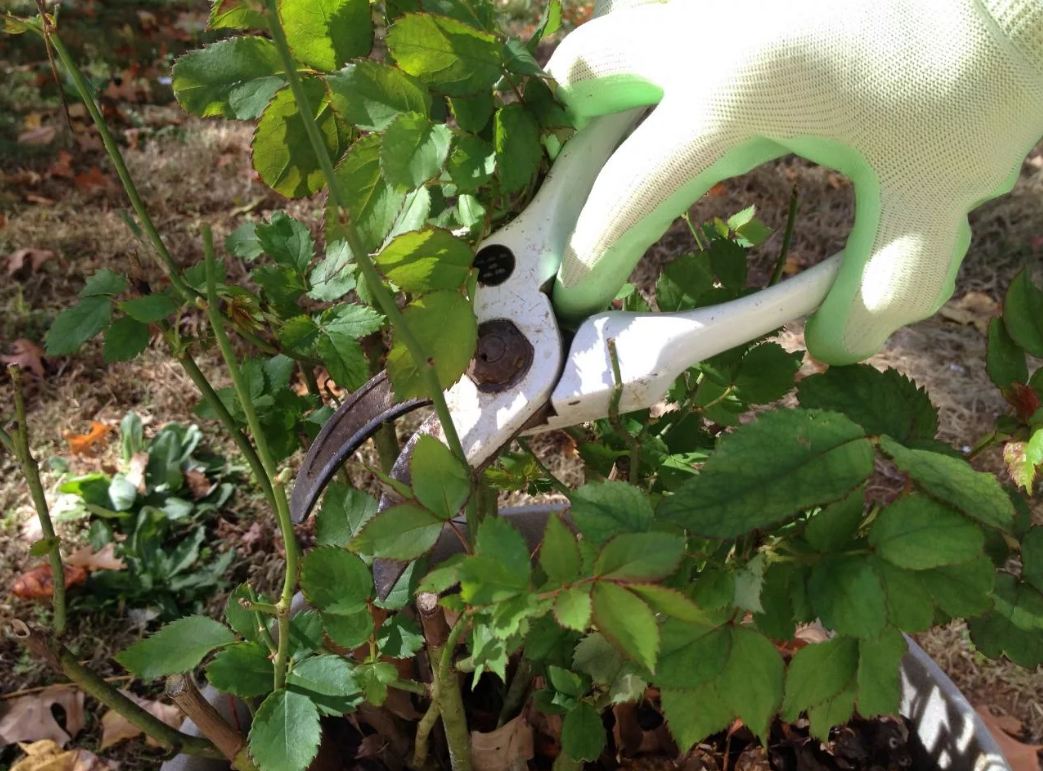
Rose pruning should be done with a clean tool
Formation of a climbing rose bush, step by step instructions
According to generally accepted rules, the formation of a climbing rose begins with a step-by-step scheme:
- The flower grower, even during planting work, must direct the shoots in the right direction. Climbing plants need a garter, this approach will help them produce the maximum number of flowers.
- When creating a shrub shape, you do not need to direct all the main branches straight up. This will provoke a problem in which foliage and buds will begin to form only in the upper part of the plant.
- The main main branches are directed horizontally, which allows vertically growing lateral shoots to form on them. Reception provides active and lush ripening of buds, helps to hide an ugly wall or hedge behind the greenery.
- If the shrubs are planted along a solid structure, then a kind of fan is created from the main branches. This will help improve air circulation and stimulate lateral shoot growth. If the plant is near the pillar, then the branches can be twisted in a spiral.
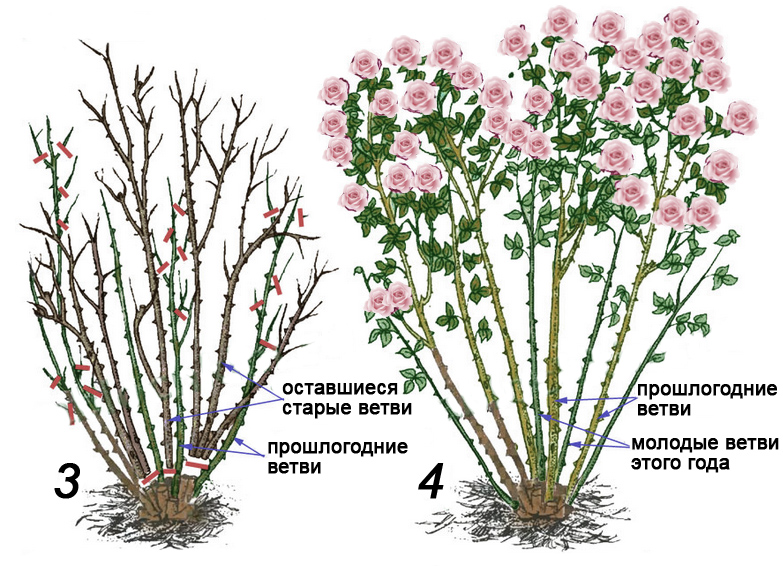
Shrub formation
How to form a climbing rose correctly? After choosing the appropriate option, do not forget about the garter rules:
- the stems must be securely and firmly fixed to the supports - this will help to avoid wind damage;
- dressing material should not cut into the shoot and cause injury;
- you cannot use wire ties, even wrapped in paper, it is better to take plastic twine, which will cause less damage to the stems.
Cutting scheme for climbing varieties
How to prune climbing roses correctly? For the procedure, you must adhere to standard recommendations. With the right approach, the plant will tolerate manipulation more easily and will form many buds in the summer.
The following points are included in the rules for pruning rose bushes:
- A sunny and calm day is selected for work. If the plants have thick branches covered with bark, then take a hacksaw. For thin and young shoots, it is enough to use a pruner.
- Before the procedure, all instruments are disinfected and well sharpened. Sharp blades will not cause serious damage, and blunt ones will create lacerations that will later become the gateway to infection.
- Shoots are cut at an angle of 45 degrees, the cut is beveled, not even. The buds on the stems are left on the outside so that the young grow on the outside, rather than creating interlacing inside the shrub.
- A distance of 1 cm is left from the pruning site to the bud. This is how the main branches are cut. Sprouted young shoots located at the base are excised. This wild growth requires the removal of the suckers below the soil level.
- Pruning is used weakly, with the removal of damaged and dry ends of the branches. It goes to the first living kidney. Then remove thin and unnecessarily short stems.
- Then thinning is carried out: the processes from the main shoots located inside the shrub are subject to excision. In the presence of old, stiff stems (older than three years of age), they are cut at the root. If they are younger, then they are shortened, leaving them at a distance of 50 cm from the base of the culture.
- The procedure ends with the processing of the cuts with garden varnish. To prevent attacks of parasitic insects and diseases, the plant is sprayed with a 1% solution of copper sulfate.
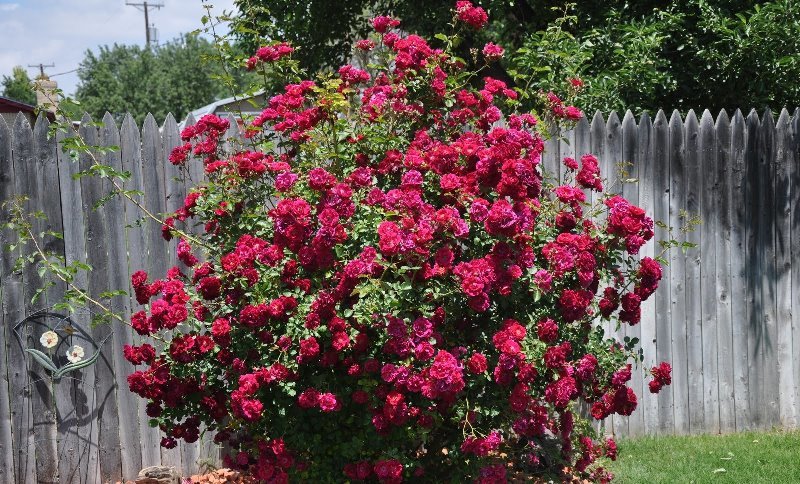
Well-groomed rose
Bush care after pruning
Any procedure with the removal of branches is a serious stress for the plants. It is necessary to strive to reduce the unpleasant effect and protect them from the negative consequences of the intervention. Florists are advised to carry out the following activities:
- Regular watering - done once a week. The liquid for moistening the earth is pre-defended, warmed to room temperature and only then the shrubs are watered. After each manipulation, the soil under the rose is loosened and sprouted weeds are removed.
- Prevention - a week after the branches are removed, the plant needs to be treated with insecticides and phytoncides. Home methods are not suitable for these purposes.
- Mulching - peat and humus are used for the process. It helps prevent the growth of weeds, retains moisture in the soil. The procedure allows you to reduce the number of irrigations and has a positive effect on the quality characteristics of the soil.
- Before the formation of foliage, you can carry out additional fertilizing with complex fertilizer. It is better to take special store formulations intended for garden roses.
Pruning climbing roses is a must. Without them, the plant will lose its main decorative qualities, it will become worse to bloom and will quickly transform into a regular rosehip. With accurate manipulations, the shrub will not suffer, it will rejuvenate and quickly begin to create new shoots and flower buds.
